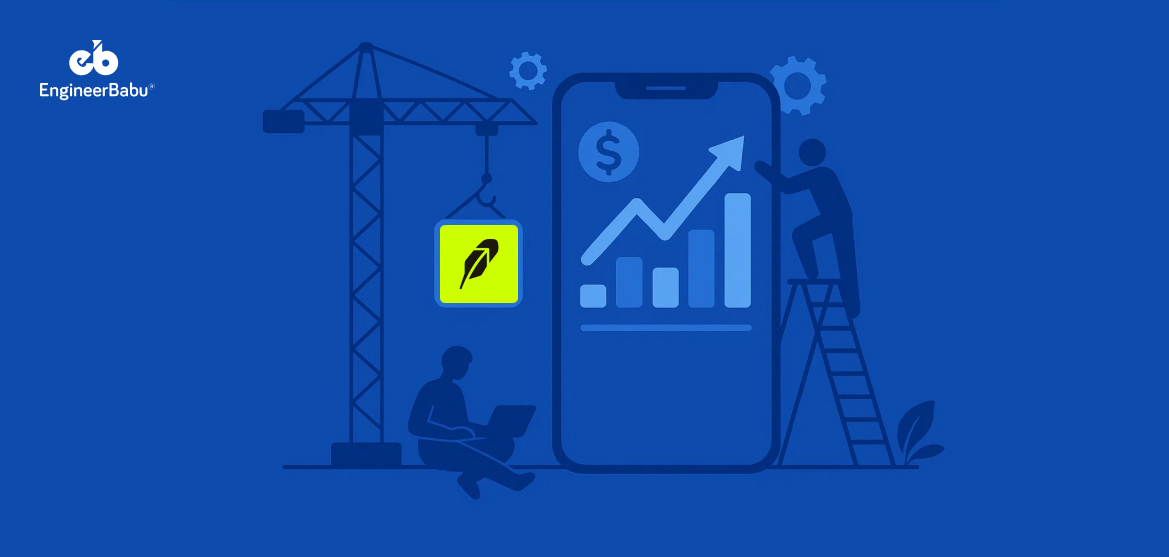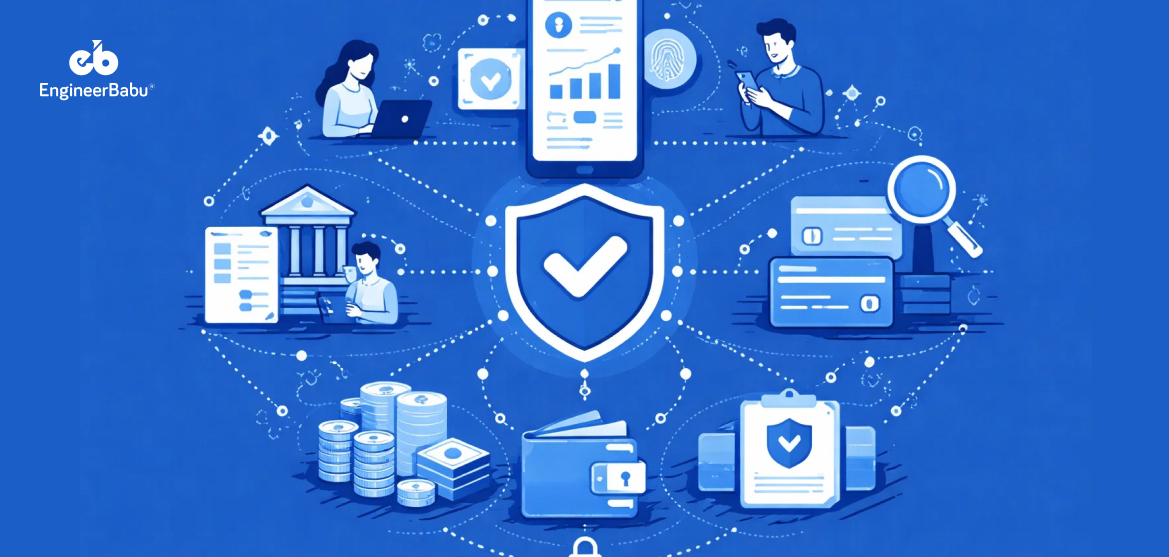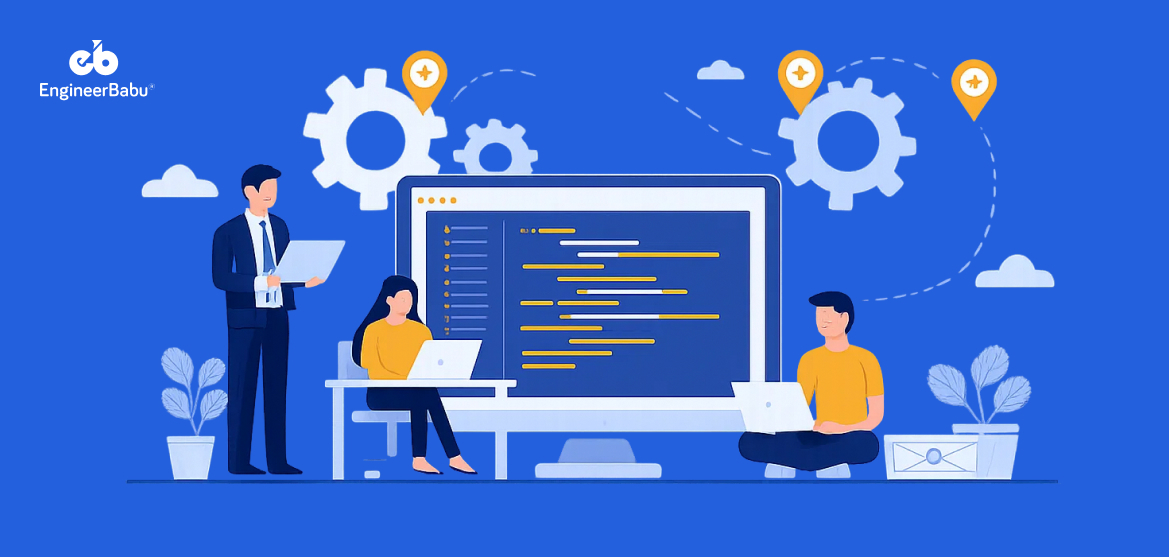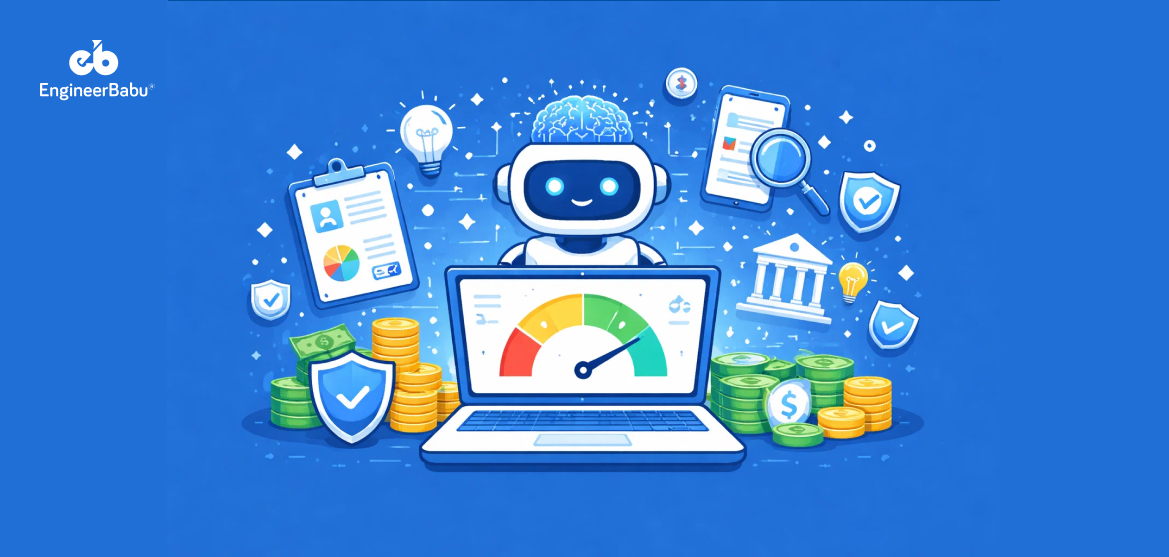When Robinhood first launched in 2013, it flipped the entire brokerage industry on its head. By offering commission-free trading with a sleek mobile interface, it gave everyday users the same access to financial markets that used to feel locked behind Wall Street doors.
The global trading app market is growing rapidly, with a CAGR of 8.2% from 2023 to 2030, driven largely by the surge in retail investor participation. This growth highlights the increasing demand for trading app like Robinhood, as more individuals seek to access and invest in financial markets through digital platforms.
The idea wasn’t just innovative, it was disruptive, and it worked. As of January 2025, Robinhood had 24.3 million users and 11 million monthly active users (investors.robinhood), proving how powerful a simple, user-first stock trading platform could be.
Robinhood’s appeal to younger investors is clear. The U.S. Investor Pulse 2024 study shows that Gen-Z and Millennial investors are now holding more assets compared to older generations, signaling a demographic shift in investment behaviors. The average user of a stock trading app like Robinhood is around 31 years old, reflecting the trend toward younger demographics in investing.
The number of retail investors in the U.S. stock market has doubled over the past decade, now making up around 25% of total equities trading volume by 2021. This shift underscores how stock trading apps like Robinhood have democratized access to financial markets for retail investors.
So if you’re wondering how to build an app like Robinhood, you’re not alone. Fintech startups and enterprises around the world are racing to capture the same audience in the booming online trading platforms market, which was valued at $9.32 billion in 2022 and is projected to reach $15.34 billion by 2030. The trading industry is rapidly adapting to innovation and technical advancements to meet the growing demand from traders wishing to earn from investments.
But creating a platform that handles real-time trading, complies, and still feels as effortless as scrolling social media isn’t as simple as just writing some code.
Therefore, this guide breaks down the exact process to build a Robinhood-like app. Let’s get into it.
What is Robinhood, and why has it become popular?
Robinhood is a US-based trading app that changed how people think about investing. Unlike traditional brokerages that charged $5–$10 per trade, Robinhood introduced a commission free trading model, allowing users to trade stocks, exchange traded funds (ETFs), and cryptocurrencies without paying fees. This quickly attracted first-time investors and younger audiences.
- Its mission was simple: “democratize finance for all.”
The app’s clean design and mobile-first approach set it apart. Instead of overwhelming users with complex charts and financial jargon, Robinhood kept the interface minimal. Investors could buy and sell stocks, ETFs, and even cryptocurrencies with just a few taps. The dashboard is an essential feature, displaying watchlists, balances, and order statuses, giving users a clear overview of their investments. Investment portfolio management features allow users to track performance and manage holdings, while order placement and tracking functionalities make it easy to execute and monitor trades.
Robinhood simplifies the investment process for beginners by providing an easy-to-navigate interface and features that make investing accessible, even for those with no prior experience. The app also offers user authentication options, including email, phone number, and biometrics, to ensure account security.
A key part of Robinhood’s commission free trading is the use of payment for order flow, where market makers act as intermediaries, executing trades and compensating Robinhood for directing orders to them.
As a result, this accessibility became its biggest strength, making investing feel less intimidating for beginners.
Another reason for its popularity was timing. When it launched, millennials were looking for affordable ways to grow their money outside of savings accounts. Furthermore, the 2008 financial crisis had left many wary of traditional banks. Robinhood filled that gap perfectly.
To operate legally, stock trading apps must implement Know Your Customer (KYC), Anti-Money Laundering (AML), and Customer Identification Program (CIP) processes to verify user identities and monitor transactions. The firm and its associated individuals must register as a broker-dealer with both the SEC and FINRA, as the U.S. trading environment is highly regulated. Partnering with a brokerage-as-a-service firm can help reduce the regulatory burden by leveraging their infrastructure and licenses. It’s also crucial to provide clear and prominent risk disclosures to users.
For entrepreneurs and startups, this success story raises an exciting question: how to build an app like Robinhood that not only matches its core features but also offers unique value.
Introduction to Stock Trading App Development
Stock trading app development is the process of creating a digital platform—typically a mobile or web application—that enables users to buy and sell stocks, ETFs, and other financial instruments with ease. The primary goal of a stock trading app is to empower investors to manage their investment portfolios, access real time market data, and execute trades securely from anywhere.
A successful trading app stands out by offering a user-friendly interface, seamless portfolio management tools, and instant access to real time market data. These key features not only help users make informed decisions but also build trust by ensuring the security of sensitive user data and financial transactions.
Developing a stock trading app involves several critical stages. It starts with thorough market research to understand user needs, regulatory requirements, and current market trends. This is followed by careful feature planning, intuitive UI/UX design, robust backend development, and rigorous testing to ensure reliability and compliance.
Security is paramount in trading app development. Protecting sensitive user data and complying with financial regulations are non-negotiable aspects of the development process. Integrating secure payment gateways and implementing strong authentication measures are essential to safeguard user accounts and transactions.
In today’s competitive fintech landscape, a well-designed stock trading app can provide a significant edge. By focusing on essential features, real time data, and a smooth user experience, you can attract a broad user base and establish your brand as a trusted player in the world of stock trading platforms.
Step-by-Step Process: How to Build an App like Robinhood?
Building a trading app is not just about writing clean code, it’s about weaving together compliance, usability, and financial technology into one seamless platform. Selecting the right technology stack is crucial—frontend options like React Native or Flutter and backend options such as Python or Node.js are commonly used. A robust, cloud-based backend is essential for scalability and managing high-volume transactions, while effective architecture must ensure scalability and low latency to support real-time transactions and data processing.
Mobile app development plays a central role in creating trading applications that democratize investing and enable users to build portfolios, manage watchlists, and receive notifications. Social trading platforms further enhance user engagement by allowing users to connect, share trading ideas, and replicate successful trades. Incorporating advanced analytics and data analytics provides users with in-depth market research tools, technical analysis, and personalized investment recommendations, improving both decision-making and app performance.
If you want to know how to build an app like Robinhood, here’s a clear step-by-step breakdown to get you moving in the right direction. Conducting thorough market research is essential to identify your target audience, analyze competitors, and validate your app concept.
Market Research & Regulatory Analysis
Before a single design sketch, it’s crucial to conduct market research to identify your target audience, analyze competitors, and understand market trends. This helps validate your app concept and ensures you address real user needs. Understand the financial landscape of your target region, as well as the financial markets in which you plan to operate. Every country has its own regulations for trading apps, like the SEC in the US. Skipping this step risks legal roadblocks later.
When planning your app, consider international markets and the need for multi currency support to expand your reach and facilitate global participation. Research user expectations, competitive offerings, and market gaps. A clear compliance roadmap ensures you’re not just building a fintech app, but creating a legally viable product that can scale safely.
Define Core Features & Monetization Model
Once compliance is mapped, it’s time to define what your app actually does. Will you focus only on stocks, or include ETFs, crypto, and mutual funds? Then, decide how you’ll generate revenue, like subscriptions, margin lending, or premium analytics.
For a basic app, essential features include stock search, real time stock prices, stock prices display, portfolio tracking, transaction history, payment gateway integration, and seamless integration with bank accounts for deposits and withdrawals. Advanced charting tools and advanced analytics are important for professional users, offering in-depth market research, technical analysis, and data visualization. Market alerts and push notifications are crucial for keeping users informed about market changes and portfolio updates. Additional features like the ability to create a watchlist and support for fractional share trading can further enhance user engagement and accessibility.
This foundation will shape development priorities and influence your tech stack. A thoughtful feature list ensures your Fintech MVP appeals to early adopters without overwhelming them with clutter.
UI/UX Design
Design is where your app begins to earn trust. Robinhood thrived because of its intuitive, minimal layout, and users will expect the same ease. Design wireframes that keep the flow simple for beginners yet layered enough to give experienced investors full control without restrictions.
Also, Mobile-first principles are critical, given that trading often happens on the go. Remember, a good UI/UX design isn’t just pretty, it directly impacts adoption and retention rates.
MVP Development
Instead of aiming for a massive launch, start lean with MVP development. Focus on essential features like onboarding, secure login, market data integration, and basic trading options. The mobile app development cost and trading app development cost for an MVP of a stock trading app like Robinhood typically ranges from $40,000 to $100,000, depending on features, infrastructure, and team location. By rolling out an MVP, you test real market demand without burning through budgets.
Incorporating feedback from early users after launching the MVP is crucial for refining the app’s functionality and improving user satisfaction. This approach keeps development agile and cost-effective while validating your core idea.
Integration with Brokerage & Payment Systems
A trading app is useless without proper financial connectivity. Partner with licensed brokerages to execute trades legally and integrate reliable payment gateways for deposits and withdrawals. Payment gateway integration is crucial for enabling secure and seamless transactions, while seamless bank account connectivity allows users to deposit, withdraw, and monitor funds in real time.
Best fintech APIs like Plaid or Stripe can help streamline bank linking. The smoother the money movement, the higher the user trust. Pay special attention to instant deposits, as delays in fund transfers can ruin the trading experience for investors. Additionally, it is essential to manage server side operations effectively to ensure secure and efficient processing of all financial transactions.
Testing & Security Audits
In fintech, a single bug can cost millions. Rigorous testing across devices and network conditions is mandatory. So, go beyond functionality, conduct penetration testing, simulate high trading volumes, and ensure end-to-end encryption to protect sensitive data and sensitive financial data from interception and unauthorized access.
Security audits should be routine, not one-off, as regular security audits help identify and address potential weaknesses in your app’s infrastructure and code. Implement two-factor authentication to enhance account security, especially for user logins, and use role-based access control to limit access based on user roles. Employ data minimization to reduce the risk of data leaks, and follow secure session management practices to prevent forgery and theft. Additionally, always implement common security practices to prevent vulnerabilities like SQL injection and Cross-Site Scripting (XSS). Remember, investors are trusting your platform with their money and data, so resilience and reliability are non-negotiable. This step is where you safeguard both your users and your brand.
Launch & Continuous Upgrades
Lastly, going live is just the beginning. Monitor performance, track user behavior, and release updates that refine the experience. Ongoing monitoring involves continuously tracking user activity and screening against sanctions lists to ensure compliance and security. Keep users informed through push notifications and real-time market alerts, so they stay updated on market changes and account activities. Roll out advanced features gradually, like options trading, fractional shares, or even crypto integration.
Post-launch maintenance and updates are important to keep the app functional and relevant to users’ needs. User feedback should guide continuous improvements after the app’s launch, helping you adapt to early user feedback and market trends. Keep compliance updated as laws evolve. Building user communities through education and support can also strengthen trust. If you’re serious about how to build an app like Robinhood, understand it’s a long game of continuous innovation.
Cost of Developing an App like Robinhood
The cost of developing a trading platform, also referred to as mobile app development cost or trading app development cost, can range from $40,000 to $400,000 depending on the app’s complexity, features, and technology stack. For stock trading apps like Robinhood, development cost is influenced by factors such as the number of features, backend infrastructure, security requirements, and the choice of technology stack—where cross-platform solutions are generally more cost-effective. A simple MVP with core functionality such as onboarding, trading, payment integration, and security can cost between $40,000-$400,000, especially if outsourced to a skilled software development company in regions like India or Eastern Europe. More advanced builds, with features like crypto trading, premium analytics, or AI-driven recommendations, may push the trading app development cost closer to $200,000 or more.
Additionally, the estimated cost for maintaining a trading app—including server hosting, updates, and compliance—may range from $5,000 to $20,000 per month. The more features and complexities a trading app has, the higher the development costs will be. Keep in mind that compliance, licensing, and ongoing maintenance add significantly to the budget.
For anyone asking how to build an app like Robinhood, factoring in long-term costs, not just initial development, is essential to avoid unpleasant surprises.
Conclusion
Robinhood proved that finance doesn’t have to be complicated. With the right mix of compliance, technology, and design, you can create an app that inspires the same level of trust and adoption. If you’re exploring how to build an app like Robinhood, now is the right time to act.
At EngineerBabu, we’ve helped fintech brands design, develop, and launch scalable solutions tailored to both startups and enterprises.
Let’s talk and get you the right team to make it happen. Explore our expertise and hire fintech developers today.
FAQs
How long does it take to build an app like Robinhood?
On average, a Minimum Viable Product (MVP) takes 4–6 months, while a full-featured trading app can require 9–12 months. Timelines vary based on complexity, integrations, regulatory approvals, and the expertise of the development team.
What compliance requirements are needed for a trading app?
Compliance depends on the region you’re targeting. In the US, SEC and FINRA approval are required. Meeting KYC, AML, and data security standards is essential before you launch publicly.
How much does maintenance cost after launch?
Post-launch expenses usually include server costs, security audits, feature updates, and customer support. On average, annual maintenance is 15–20% of initial development costs, but this can rise depending on the number of active users and compliance changes.
Can I add cryptocurrency trading features from the start?
Yes, but it’s not recommended for the MVP phase due to additional licensing and integration requirements. Most startups begin with stocks or ETFs, then expand into crypto once they’ve established trust and resolved compliance complexities.
Why choose EngineerBabu for fintech app development?
EngineerBabu has a proven track record in fintech solutions, combining regulatory expertise with technical excellence. From design and development to launch and scaling, our teams ensure your product is secure, compliant, and built for growth.




